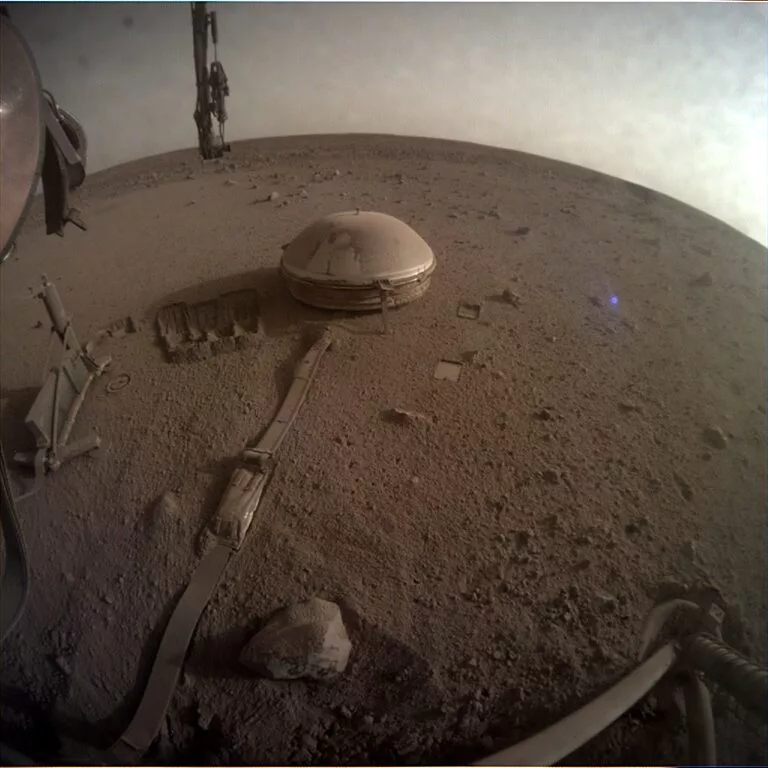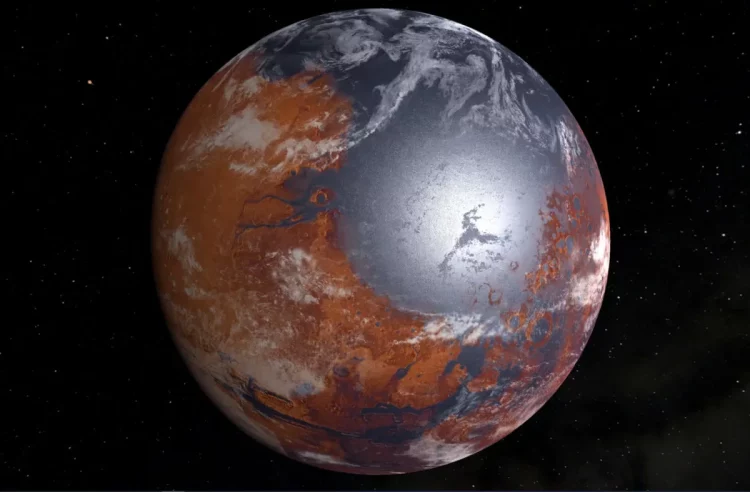1. Introduction
The search for water on Mars has been a central focus of planetary science for decades. The discovery that Mars may host oceans worth of water deep underground represents a groundbreaking development in our understanding of the Red Planet. This article provides a comprehensive examination of the evidence supporting this hypothesis, the implications for future exploration, and the potential for life on Mars. By exploring the geological, hydrological, and scientific aspects of this discovery, we can gain a deeper appreciation of Mars’ potential to support life and the ongoing efforts to unravel its mysteries.
2. The Importance of Water in Mars Exploration
2.1 Water as a Key Ingredient for Life
Water is fundamental to life as we know it. Its presence on Mars is critical for several reasons:
- Biological Potential: Water is essential for the existence of life, and the presence of liquid water increases the likelihood that Mars may have hosted or still hosts microbial life.
- Support for Human Exploration: Understanding water sources on Mars is crucial for future human missions, as water can be used for drinking, agriculture, and oxygen production.
2.2 Historical Context of Water Discoveries on Mars
Mars has long been a focus of interest due to evidence suggesting past water activity:
- Mars Rovers: Missions such as Spirit, Opportunity, and Curiosity have discovered signs of ancient riverbeds, lakebeds, and minerals that form in the presence of water.
- Orbiters and Satellites: Observations from orbiters, including Mars Reconnaissance Orbiter (MRO) and Mars Express, have identified features like valley networks and polar ice caps, indicating past water flow and storage.
3. Evidence for Subsurface Water Oceans
3.1 Geophysical Evidence
Recent research suggests that Mars may contain vast amounts of water in its subsurface:
- Radar Data: Instruments on spacecraft, such as the MARSIS (Mars Advanced Radar for Subsurface and Ionosphere Sounding) on Mars Express, have detected reflective signals from beneath Mars’ surface. These signals suggest the presence of liquid water or ice deposits in the planet’s subsurface.
- Seismic Data: Although direct seismic measurements are limited, models based on radar and gravity data indicate that Mars’ subsurface may contain extensive water reservoirs.
3.2 Geological Indicators
Geological features on Mars provide indirect evidence of significant subsurface water:
- Polar Ice Caps: Mars’ polar ice caps, composed of water and carbon dioxide ice, suggest the presence of water in different forms across the planet.
- Hydrated Minerals: Minerals such as clays and sulfates found on the Martian surface form in the presence of water, indicating historical water activity that may extend to the subsurface.
3.3 Recent Studies and Discoveries
Recent studies have strengthened the case for subsurface water oceans on Mars:
- Subsurface Lakes: Research published in journals like Science and Nature has proposed the existence of liquid water lakes beneath Mars’ icy surface. These studies use radar data and computer models to infer the presence of large, subsurface water reservoirs.
- Water Ice Distribution: Models of Mars’ water ice distribution suggest that water could be trapped in large quantities below the surface, particularly in the planet’s mid-latitudes and polar regions.
4. Implications for Future Exploration
4.1 Scientific Exploration
The discovery of subsurface water oceans has significant implications for scientific research:
- Astrobiology: Understanding subsurface water reservoirs could provide insights into the potential for life on Mars. Research into extremophiles on Earth informs the search for microbial life in extreme environments on Mars.
- Geological Processes: Studying subsurface water can reveal information about Mars’ geological history and the processes that shaped its surface and climate.
4.2 Human Missions to Mars
Future human missions to Mars will be impacted by the presence of subsurface water:
- Resource Utilization: Accessing subsurface water could provide a valuable resource for human explorers, reducing the need to transport water from Earth and supporting long-term habitation.
- Site Selection: Identifying locations with accessible subsurface water will be crucial for selecting landing sites and establishing habitats.
4.3 Technological Challenges
Exploring and utilizing subsurface water presents several technological challenges:
- Drilling Techniques: Developing and deploying drilling technology capable of reaching and extracting subsurface water is a significant challenge. Current technologies are primarily designed for terrestrial use and may require adaptation for Martian conditions.
- In-Situ Analysis: Analyzing subsurface water samples will require sophisticated instrumentation capable of operating in harsh Martian environments.
5. The Search for Life
5.1 Potential for Life in Subsurface Water
The presence of liquid water, even if beneath the surface, raises the possibility of life:
- Microbial Life: If subsurface water is rich in nutrients, it could support microbial life. Extremophiles on Earth thrive in extreme environments, suggesting that similar life forms could exist on Mars.
- Habitability: The conditions of subsurface water, including temperature, pressure, and chemical composition, will determine its habitability. Future missions will focus on assessing these conditions.
5.2 Comparative Studies
Comparative studies of extreme environments on Earth provide insights into potential Martian life:
- Earth’s Subsurface Environments: Research into subsurface life in extreme conditions, such as deep-sea hydrothermal vents and ice-covered lakes, offers analogs for understanding potential Martian ecosystems.
- Analog Missions: Analog missions on Earth, such as those conducted in Antarctica and the Atacama Desert, simulate Martian conditions and help scientists prepare for exploring subsurface environments on Mars.

6. Future Missions and Research
6.1 Planned Missions
Several upcoming missions will further investigate the presence of subsurface water on Mars:
- Mars Sample Return Mission: This mission, a collaboration between NASA and ESA, aims to return samples from Mars to Earth for detailed analysis. It will provide valuable information about Martian geology and the potential presence of water and life.
- Subsurface Exploration Missions: Future missions may include landers or rovers equipped with advanced drilling technology to access and analyze subsurface water reservoirs.
6.2 Technological Innovations
Advancements in technology will play a crucial role in exploring subsurface water:
- Advanced Drilling Systems: Developing drilling systems capable of penetrating Mars’ surface and accessing subsurface water is a key focus for future exploration.
- In-Situ Analysis Tools: Instruments for analyzing water samples on Mars will need to be highly sensitive and resilient to operate in the planet’s harsh environment.
7. The Broader Impact of Water on Mars
7.1 Climate and Geology
The presence of water on Mars has implications for its climate and geological history:
- Climate Change: Understanding how water has interacted with Mars’ climate over time can provide insights into the planet’s evolution and past habitability.
- Geological Features: Water has played a role in shaping Mars’ surface features, such as valleys, channels, and sedimentary deposits. Studying these features helps reconstruct the planet’s geological history.
7.2 Mars as a Potential Habitat
The discovery of subsurface water enhances Mars’ potential as a future habitat:
- Long-Term Habitation: Access to water is essential for sustaining human life and establishing a permanent presence on Mars. Identifying and utilizing subsurface water could support long-term human missions and colonization efforts.
- Terraforming: The presence of water raises the possibility of terraforming Mars to create a more habitable environment. While this concept is still theoretical, understanding Martian water resources is a crucial step toward making it a reality.
8. Challenges and Controversies
8.1 Data Interpretation
Interpreting data related to subsurface water presents challenges:
- Radar Signal Interpretation: Reflective signals detected by radar instruments must be carefully analyzed to distinguish between water, ice, and other subsurface materials.
- Model Uncertainties: Models predicting the distribution and quantity of subsurface water rely on assumptions and data that may be subject to revision as new information becomes available.
8.2 Ethical and Practical Considerations
The exploration and utilization of Martian water involve ethical and practical considerations:
- Planetary Protection: Ensuring that exploration and utilization activities do not contaminate Mars or interfere with potential ecosystems is a key concern for planetary protection.
- Resource Management: As human activities on Mars expand, managing water resources responsibly and sustainably will be essential to avoid conflicts and ensure the success of future missions.
9. Case Studies and Analogies
9.1 Earth Analogues
Studying analog environments on Earth provides valuable insights into Martian conditions:
- Antarctic Subglacial Lakes: Lakes beneath Antarctica’s ice sheets offer analogs for understanding subsurface environments on Mars. Research into these lakes informs our knowledge of how life might exist in similar Martian environments.
- Deep-Sea Hydrothermal Vents: Hydrothermal vents on Earth’s ocean floor represent extreme environments where life thrives in the absence of sunlight. These analogs help scientists understand potential subsurface life on Mars.
9.2 Analog Missions
Analog missions simulate Martian conditions to prepare for future exploration:
- Mars Analog Missions: Missions like NASA’s Mars Desert Research Station and the Mars Society’s Mars Habitat simulate Martian environments and provide valuable data for planning future missions.
- Subsurface Exploration Experiments: Experiments conducted in extreme environments, such as underground mines and caves, help develop techniques and technologies for exploring subsurface water on Mars.
10. Conclusion
The possibility that Mars may host oceans worth of water deep underground represents a significant advancement


















































Discussion about this post